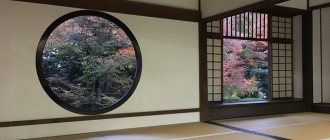Tourists with a Western mindset are delighted by Japan with its unusual culture and traditions. The Japanese are not only the most high-tech nation, but also one of the most caring towards their customers. Residents of the Land of the Rising Sun pay special attention to cleanliness and toilets are no exception: their convenience and sterility are monitored no less carefully than the quality of food served in restaurants. After all, a dirty toilet for a Japanese is a shame and a ruined mood for the rest of the day. I present to you 12 incredible toilets in Japan that amaze the imagination and arouse curiosity not only to use them for their intended purpose, but also to visit them as a real attraction!
This selection is taken from the 2013 book “Japanese Toilets and Beyond,” in which its author, Maritomo-san, outlined the results of many years of work to find unique toilets in Japan that can bewitch with their beauty. According to the writer, these toilets fully reflect the Japanese philosophy of hospitality.
Golden toilet
Known for its fantastic, slightly crazy atmosphere and interior, the Robot Restaurant in Tokyo is more memorable to visitors not for its delicious food, but for its carefully thought-out entertainment program. This is where the luxurious golden toilet is located. A considerable amount of money was invested in the restaurant, according to some estimates, about one hundred million dollars, and, obviously, a significant part of it went to transform this sparkling toilet, which continues to be decorated and improved to this day.
First part
This is how Japanese toilet culture began
The topic of conversation returns to education and the shaping of Japan's toilet culture. In fact, Japanese toilets in the past were far from being considered “world champions”; even the Japanese themselves did not consider them a reason to be proud. It's all because of the "5K" (the first sound of all five words in Japanese is the sound [k] - editor's note), which has plagued Japanese society in the past. These include “stench,” “dirt,” “darkness,” “danger,” and “breakdown.”
Until the mid-1950s, Japanese homes and public places are said to have used mostly floor-mounted toilets. European-style toilets only became truly popular after the Tokyo Olympics in 1964. The widespread use of floor-mounted toilets has been quite problematic.
Public places, including educational institutions, commonly used floor-mounted toilets, which were usually cleaned using the "wet clean" method. However, a humid environment favorably influenced the growth of bacteria, and also became the main source of unpleasant odors. In Japan, random checks of elementary school toilets were carried out and it was found that E. coli that was growing around floor toilets was spread through the soles of children.
Based on the example of Japanese schools, it becomes clear that many educational institutions built between the mid-1960s and mid-1980s were faced with the problem of outdated and broken toilets. Back then, most toilets were floor-mounted, and not only were they difficult to clean, but they also produced an unpleasant odor. It even got to the point that many students, accustomed to using the toilet at home, deliberately tolerated and did not go to the toilets in schools, and this caused health problems. There is no doubt that this problem was widespread in other public toilets.
In 1985, Japan got a chance to improve its toilet situation. This year an organization called the Japan Toilet Association (JTA) was founded.
© AP Photo, Koji Sasahara Toilet bike on display in Tokyo, Japan
Initially, it consisted only of meetings at which scientists, architects, officials and businessmen discussed the situation with toilets. However, it was impossible for everyone to turn a blind eye to the “tragedies” of Japan, including its toilets, and subsequently an organization gradually began to form where proposals were made to carry out research and study, as well as to resolve relevant problems. Then it turned into an annual state seminar.
(At that time) it was impossible, even if one wanted to, to know the number of public toilets in Japanese cities. The government agencies that controlled the parks and areas through which the rivers flowed functioned separately. “It (the toilet problem) was a structural problem that was always difficult to detect and solve,” recalled Yamamoto Kohei, a member of the founding association and former head of the general affairs department.
The association has put forward the slogan - the desire for a “comfortable environment” - and is actively working to select high-quality toilets. November 10th has become "Toilet Day" in Japan, and on this day a national "toilet seminar" is held. This seminar discusses toilet problems that may arise in various places and periods: in educational institutions, during disasters, when visiting mountain peaks, at public welfare sites, etc. Positive results have been achieved in identifying the causes that lead to contamination and odor in toilets and in developing methods to resolve the problem.
She also holds an annual vote and announces the winner of the “Best Toilet in Japan” category. In 2015, at the 30th anniversary of the association, the “Great Toilet Dictionary” was presented for the first time in the world.
Not only this organization, but also Japanese enterprises play an active role in improving the situation with toilets in Japan. For example, faced with the problem of toilets in educational institutions, TOTO and other sanitary ware manufacturers established a special “Association of Toilets in Educational Institutions” in 1996. Based on the results of research and audits carried out by the association, it was decided to call for the complete replacement of floor-standing toilets with sit-down toilets in all educational institutions.
Association chairman Hiroya Kawamura said: “People who are used to using a floor-mounted toilet generally do not welcome direct contact with the seat circle, but in fact there are few bacteria on it or on the nozzle. On the floor next to the floor-mounted toilet, which is cleaned with regular water, on the contrary, many microbes were found. Therefore, it will be more effective to replace it with sit-down toilets and use “dry cleaning” when cleaning. Many local governments in Japan responded positively to such a call, and a decision was made to replace floor-mounted toilets with sit-down toilets when renovating restrooms in educational institutions.
From TOTO plumbing supply data, it can be seen that after 1976, sit-up toilets began to become more widespread in Japan, and in 1980, when the TOTO Washlet was developed, they became even more popular. Thus, TOTO Washlet became a product that opened a new era in the Japanese desire for convenience and cleanliness of the toilet. Not only has it greatly improved toilet hygiene, but it has also played a role in preventing diseases such as hemorrhoids. This is what helped him achieve such wide recognition.
Humanistic approach to women
Just as the tradition of caring for women can be observed throughout Japan, the evolution and development of Japanese toilets (such as the function of Yi Jin toilets, the ability of self-cleaning nozzles, child seats, etc.) embodied the Japanese culture of attention and care. caring for a woman.
Given women's reluctance to have direct contact with the toilet lid in public toilets, convenient "female urinals" called Sanistand were specially developed in Japan. In 1964, during the Tokyo Olympics, such urinals were installed in the toilets of the State Arena, which was the main venue for the games. Then it became one of the hot topics for discussion. But at that time, it seemed that even more women opposed their use, and as a result, the new toilets were not widely used.
Videnskab 07/21/2018 ScienceAlert 06/02/2018 Lidovky 10/09/2017
Another example is the reform of toilets on highways and rest areas. It is believed that in the past, Japanese toilets on highways and rest areas were exactly the same as toilets in other public places. Due to the widespread use of floor toilets and the wet method of cleaning them, various problems existed, including problems of sanitation and overcrowding. It was difficult to use such toilets. However, with the constant improvement of toilet equipment in homes and commercial establishments, the situation surrounding toilets has gradually improved. In 2008, Japan announced it would begin updating toilets on highways and rest areas. The main emphasis of the reform was on women. Due to the fact that when visiting the restroom, women usually correct their makeup or tidy up their clothes, compared to men, they need more time to use them. To provide women with a more comfortable environment when visiting the restroom and at the same time reduce queues, during the reconstruction of restrooms on highways and in rest areas, the number of rooms in women's restrooms was increased and a larger number of mirrors were installed. All this was intended to simultaneously keep the room clean and make the room appear more spacious and bright, as well as to make the environment more aesthetically pleasing, thereby providing the best possible space for women to use.
“To create a society in which women feel more comfortable, we must strive to improve the quality of toilets” - in 2015, the Japanese government established the “Japanese Toilet Award”. This award was established on the basis of the above proposals from the society to give it to those people and organizations that have distinguished themselves by creating original latrines or participating in events dedicated to latrine issues. In 2015, a total of 378 works were collected, of which 28 received high marks. Not only were unique toilets noted, providing aesthetic pleasure or intended for widespread and comfortable use during disasters, but many others were noted, such as those that could act as an aid to developing countries in solving their toilet problems.
It is said that as Japanese women gradually begin to work, the demand for "comfortable" toilets is gradually increasing in Japanese commercial establishments and companies. Very often, for women, the toilet becomes one of the criteria for choosing where to spend their leisure time and where to go shopping, and even one of the criteria determining the choice of place of work.
Japan's toilet culture goes global
“What kind of place is this?” - exclaimed a tourist from the USA, amazed by what he saw. A wall completely filled with something appeared in front of him, looking like a work of art, on which various scenes from cartoons seemed to come to life. Only by looking closely can you see that this is nothing more than a toilet.
Creating the world's number one toilet - In April 2015, experimental toilet models developed by GALLERY TOTO were put into operation at Tokyo International Airport Terminal 2, Tokyo Air Gate. They were designed by the famous architectural firm Klein & Dytham Architecture (KDa), their goal is to convey the Japanese culture of toilet comfort and enormous technical potential to the world.
Astrid Klein, one of the owners of this office, explained why they used such an innovative design concept: “Even though Japan gives the impression of a temple and a prayer hall, like something calm and elusive, however, foreigners prefer Japan to be bright and colorful, like its kimono".
Not only the appearance, but also the internal design of each toilet room is individual. There is no one set shape for all rooms, some are L shaped and some are T shaped. This type of design is used to expand the space in the washroom. In order to provide foreign tourists visiting Japan with the best and most unforgettable toilet experience, each room was carefully designed and the latest TOTO equipment was used.
There is no doubt that not only at the airport, but in all parts of Japan, the toilet has become a “landmark”. This allows tourists to fully experience Japanese culture and even leaves a strong impression on them that encourages them to return.
“The toilet used to be such a bad place to hide, and the time you had to spend in it was considered torture. However, in recent years the situation has completely changed. Just look at the toilet, and you can immediately recognize the store, the area, or even understand the situation in society. We can say that the toilet has become a kind of measure or standard,” said restroom designer and board member of the Japan Toilet Association Masako Shirakura.
From a social issue to a symbol of Japan, from traditional Japanese hospitality to the spirit of craftsmanship and caring for women, Japanese toilets are a symbol of culture. They are constantly developing and gradually entering the world stage, taking an active part in improving the quality of life of the peoples of all states.
InoSMI materials contain assessments exclusively of foreign media and do not reflect the position of the InoSMI editorial staff.
Toilet in the garden
And this toilet in the city of Ichihara was intended to be the largest in the world. His booth is not this glass booth, as you might think. The entire garden area around is the cabin. Toilet area 200 sq. meters is intended for women only. Beautiful ladies sometimes feel awkward in such open space and are embarrassed, but they all later admit that the feeling of privacy and tranquility that this garden gives is priceless.
Toilet with paper
In this toilet, located in a restaurant in Kyoto, you don’t have to worry about running out of toilet paper! This miracle of frugality appeared thanks to a random coincidence of circumstances. The purchasing manager mistakenly ordered too many roll holders, and someone creative came up with the idea of putting them all on one wall. The edges of the paper are always neatly folded into a triangle; such attention cannot but please visitors.
Main functions
The first thing that impresses any European is the bidet. The Japanese living in small apartments obviously do not want to waste space on several hygiene devices, and therefore decided to combine everything they need in one. That is why the Japanese toilet is quite capable of coping with the bidet function. In this case, you can set the temperature, direction and intensity of the jet. So, the Japanese women's toilet is much gentler. A special hairdryer is also provided.
The second necessary function was a heated seat. The fact is that heating a home is a serious expense item for the average Japanese. They prefer to save on this, although in the cold season this sometimes causes serious inconvenience. However, the toilet needs to be warm, which is why a heated seat is so important.
Opening and closing the lid - automatically or by command - is also a fairly popular function; you don’t have to do it with your hands, which helps maintain cleanliness. Well, certainly in Japanese families spouses rarely quarrel over lids that are not raised or lowered.
Another trait that is especially pronounced among young girls is extreme shyness. The smells and sounds inherent in the process of relieving oneself are disconcerting, even though they are natural. That is why often, while using the toilet, you can turn on music or the sounds of running water, as well as forced ventilation at the source of the unpleasant odor, that is, in the toilet itself.
The oldest toilet in Japan
Hyakusetti is the oldest toilet in Japan. It is located in Tofukuji Temple. Its area is almost 500 square meters. meters. The toilet is no longer used for its intended purpose, as it is a cultural monument. Once upon a time, up to a hundred people could fit here to satisfy their physiological needs. It is also known that previously the toilet was visited according to certain rules, since excrement served as an important component of the income of the temple, because it was used as fertilizer.
Control
This part scares any European who encounters a high-tech toilet for the first time. But if we talk about the basic set of functions, operating a modern Japanese toilet is not that difficult.
The most visible button is usually “stop”. There is a square drawn on it, so it is easy to recognize.
The wash and bidet functions are usually depicted as jets of water directed at a sketchy man and woman. Nearby there may be buttons that regulate the temperature and intensity of the jet.
Another key that is most often present on the control panel is accompanied by a pattern in the form of notes. As you can guess, when you press it, music or other sounds will turn on.
So, managing the basic functions is not that difficult. When it comes to dedicated remotes, displays or smartphone apps, things can be tricky, but fortunately the Japanese understand the realities of the modern world, so labels are often dubbed in English.
Toilets with local features
Each restaurant in the Ippudo chain has a unique design. This toilet in the city of Nagoya, with its style reminiscent of steampunk, in fact, it imitates the insides of a car. This is a kind of tribute to Toyota, whose head office is located in this prefecture. The restaurant is meticulous when it comes to decoration, so real car engines were used to decorate the walls.










